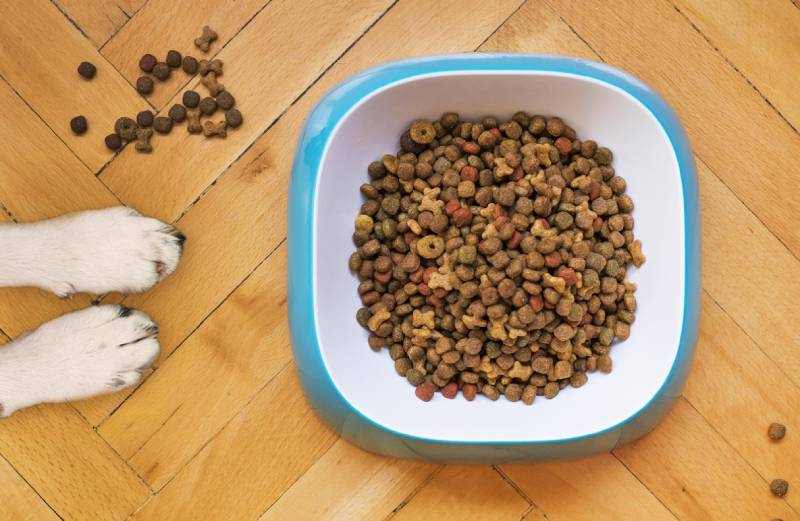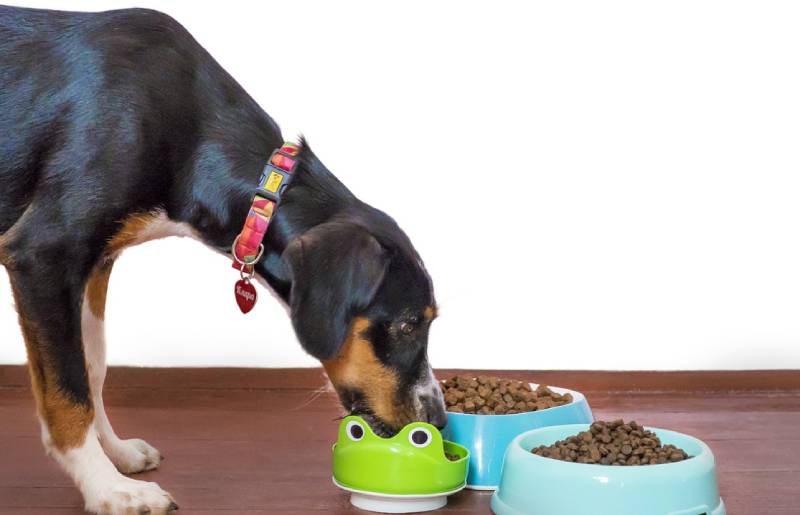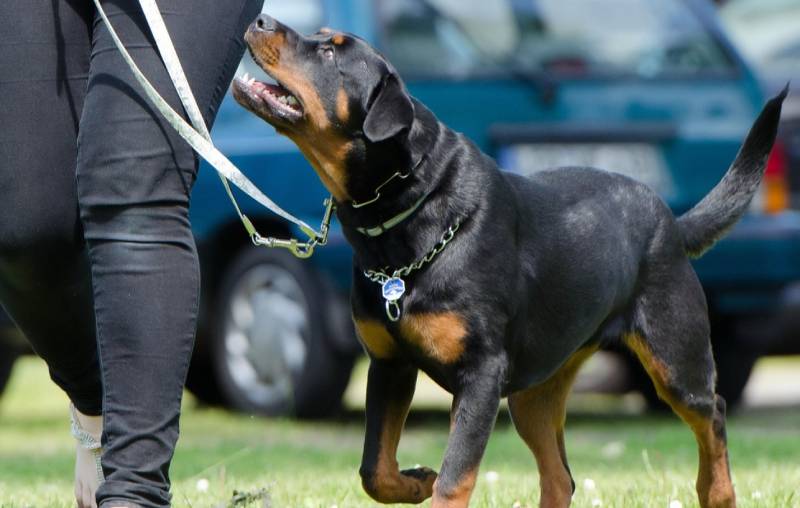If you’ve ever stood in the pet food aisle staring at bags of kibble, wondering, “How much food should I feed my dog?”, you’re not alone. Whether you’re a first-time puppy parent or a seasoned dog owner, figuring out the right portion size can feel like decoding a mystery. Feed too little, and your dog risks malnutrition; feed too much, and obesity and related health problems could follow.
The truth is, there’s no single answer that works for every dog. A tiny Chihuahua, an energetic Border Collie, and a senior Great Dane all have very different needs. In this guide, we’ll break down factors that determine the right amount of food for your dog, and the exact dog feeding amount principle with easy-to-follow dog and puppy feeding charts. Let’s dive in!

Why It’s Important to Feed Dogs the Right Amount?
Feeding your dog the proper amount of food isn’t just about filling their bowl—it’s one of the most fundamental steps you can take to support their overall health and well-being.
1. Preventing Obesity and Its Consequences
Overfeeding is a primary risk factor for obesity in dogs. Excess weight can strain joints, predispose dogs to heart disease, diabetes, and mobility issues, and generally decrease their quality of life. In fact, obesity is alarmingly common among dogs—especially when high-calorie human foods are added on top of regular meals.
2. Avoiding Underfeeding and Ensuring Nutritional Balance
Underfeeding can be just as harmful as overeating. Dogs who don’t receive enough food may suffer from malnutrition, weakened immune systems, poor muscle and bone development, dull coats, lethargy, and other serious health problems.
3. Maintaining Energy, Activity, and Healthy Development
Correct portion sizes help dogs maintain steady energy levels for normal physical and mental activity. Active dogs need sufficient calories to sustain their play and exercise, while puppies and growing dogs require precise nutrition to support proper skeletal, neurological, and immune system development.
4. Early Detection of Health or Lifestyle Changes
Consistently managing your dog’s portions not only keeps them in shape—it also helps you notice sudden changes. If a dog begins to gain or lose weight unexpectedly, it may signal shifting activity levels, changes in metabolism, or underlying health concerns.
How Much Dog Food Should I Feed My Dog?
Feeding the right amount of food is essential to keeping your dog healthy, maintaining an ideal weight, and preventing both underfeeding and overfeeding. The amount your dog needs depends on factors such as age, weight, breed, activity level, and the calorie content of the specific food you’re using. Always use a standard measuring cup for accuracy, and adjust portions based on your dog’s body condition.
Adult Dog Feeding Chart
Below is an example feeding guide from Blue Buffalo Dry Dog Food. Amounts are based on your dog’s body weight and represent the total daily portion.
|
Adult Dog’s Weight (lbs) |
Recommended Daily Amount |
|
Up to 15 lbs (≤ 6.8 kg) |
½ – 1¼ cups |
|
16 to 25 lbs (7.3 – 11.3 kg) |
1¼ – 1¾ cups |
|
26 to 40 lbs (11.8 – 18.1 kg) |
1¾ – 2½ cups |
|
41 to 60 lbs (18.6 – 27.2 kg) |
2½ – 3½ cups |
|
61 to 80 lbs (27.7 – 36.3 kg) |
3½ – 4¼ cups |
|
81 to 100 lbs (36.7 – 45.4 kg) |
4¼ – 5 cups |
|
Over 100 lbs (> 45.4 kg) |
5 cups plus ½ cup for each additional 20 lbs |
Puppy Feeding Chart
This chart shows the recommended total daily feeding amounts for puppies, based on age and body weight.
|
Puppy’s Weight (lbs) |
Daily Amount (1 to 3 months old) |
Daily Amount (3 to 5 months old) |
Daily Amount (5 to 7 months old) |
Daily Amount (7 to 12 months old) |
|
Up to 5 lbs |
¾ – 1 cup |
½ – ¾ cup |
½ – ¾ cup |
¼ – ½ cup |
|
6 to 10 lbs |
1 – 1¾ cups |
¾ – 1 cup |
¾ – 1 cup |
½ – ¾ cup |
|
10 to 20 lbs |
1¾ – 2¾ cups |
1 – 1¾ cups |
1 – 1½ cups |
¾ – 1½ cups |
|
21 to 40 lbs |
2¾ – 4¾ cups |
1¾ – 3 cups |
1½ – 2¾ cups |
1½ – 2½ cups |
|
41 to 60 lbs |
4¾ – 6¼ cups |
3 – 4¼ cups |
2¾ – 3¾ cups |
2½ – 3¼ cups |
Senior Dog Feeding Chart
Follow this table to determine how much to feed your senior dog each day.
|
Senior Dog’s Weight (lbs) |
Recommended Daily Amount |
|
Up to 15 lbs (≤ 6.8 kg) |
½ – 1¼ cups |
|
16 to 25 lbs (7.3 – 11.3 kg) |
1¼ – 2 cups |
|
26 to 40 lbs (11.8 – 18.1 kg) |
2 – 2¾ cups |
|
41 to 60 lbs (18.6 – 27.2 kg) |
2¾ – 3¾ cups |
|
61 to 80 lbs (27.7 – 36.3 kg) |
3¾ – 4¾ cups |
|
81 to 100 lbs (36.7 – 45.4 kg) |
4¾ – 5½ cups |
|
Over 100 lbs (> 45.4 kg) |
5½ cups + ½ cup for each additional 20 lbs |
Note: The feeding amounts listed are guidelines only. Different dog food products may require different portions depending on their calorie content and formula. Your dog’s age, breed, environment, and activity level can also affect how much they need. If you’re unsure about the right amount to feed, consult your veterinarian for advice.
Which Factors Actually Determine How Much Should I Feed My Dog?
When determining the right amount of food for your dog, several key factors come into play:
1. Age and Life Stage
2. Body Weight, Size & Breed
3. Activity Level
4. Metabolic Rate / Resting Energy Requirements (RER)
5. Health Status
Dogs with specific medical conditions (e.g., obesity, diabetes, renal issues) may need tailored food portions or specialized diets. For example:
6. Environmental Conditions
Extremes in temperature and terrain dramatically affect energy needs:
7. Food Type & Nutrient Composition
8. Body Condition Scoring (BCS) & Monitoring
How Often Should I Feed My Dog?
Wondering how many times a day should a dog eat? Feeding frequency shapes how many cups of food should I feed my dog per meal:
Puppies:
Toy breeds: 4–5 small meals/day up to ~4 months old; then shift to 3 meals until ~6 months.
Small/medium/large breed puppies: 3 meals/day up to ~4 months, then 2–3 meals depending on breed size.
Adult & Senior Dogs:
Small/medium breeds: generally 2 meals per day.
Large and giant breeds: often 2–3 meals per day.
The aim is to promote predictable digestion, stable energy levels, and avoid bloat (especially in large breeds). Free-feeding—leaving food out all day—is discouraged for most dogs, as it often leads to overeating.
Example: If your feeding chart says 2 cups/day and you feed twice daily, that’s 1 cup in the morning and 1 in the evening.
How Do Feeding Needs Change by Life Stage (Puppy, Adult, Senior)?
Puppies
They grow fast and burn energy quickly. Feed calorie-dense, balanced puppy formulas. Size matters—tiny pups may need several small meals to prevent hypoglycemia. Guidance: toy breed puppies ~¼–½ cup several times daily; adjust with vet advice.
Adult Dogs
Maintain ideal weight with balanced adult diets. Portion depends on weight, activity, and metabolism. Use dog feeding charts and adjust based on body condition. Active dogs—like working breeds—may need extra calories; couch potatoes need less.

Senior Dogs
Aging dogs slow down, lose lean mass, and may need joint support. Senior diets often lower calorie density but higher digestible protein and joint-friendly supplements like glucosamine. Portion sizes often decrease even if frequency remains at two meals.
How Do I Monitor and Adjust Portions Over Time?
A flexible approach ensures your feeding stays on track:
1. Weigh & Body Condition Score – Check at least monthly. Based on an ideal condition, adjust 10–20% up or down. It is suggested to feed 2–3% of body weight as a starting point and adjust from there.
2. Use Kitchen Scales or Measuring Cups Consistently – Be precise. Homecooked meals must be carefully weighed and balanced. Small dogs especially gain weight quickly with excess food.
3. Track Treats & Extras – Limit treats to ≤10% of daily calories. For example, if your dog eats 500 kcal/day, keep treats under 50 kcal. Human foods like bacon or eggs can pack major calories—two bacon strips may use over half of a tiny dog’s daily intake.
4. Adjust for Activity Changes – Increase portions slightly when periods of high activity begin, and reduce when activity declines.
5. Veterinary CheckIns – If weight gain, loss, skin issues, or digestive changes appear, consult your vet. You may need a tailored plan.
Conclusion
Figuring out how much food should i feed my dog is a journey—not a one-time guess. Use dog feeding charts, weight-based guidelines, and life-stage considerations. Feed measured portions, monitor condition, and adjust gradually. Keep treats minimal and aligned with calorie goals. Most importantly, partner with your veterinarian to personalize nutrition. Your thoughtful care ensures a balanced, happy life for your furry companion—because feeding well is an act of love.
FAQs
How many times should I feed my dog by age?
Puppies under 3 months need 4 meals daily, as their small stomachs require frequent feeding. From 3–6 months, reduce to 3 meals per day. Between 6–12 months, most dogs do well on 2 meals. Adult dogs (1 year+) should be fed twice daily for stable energy and digestion. Senior dogs may benefit from smaller, more frequent meals if appetite or digestion changes. Always adjust based on breed, size, and health.
Is 2 meals a day enough for a dog?
Yes. For most adult dogs, two meals a day—morning and evening—provides balanced nutrition and stable energy. Puppies, small breeds, or dogs with health conditions may need more frequent feeding.
Can I free-feed my dog if they don’t overeat?
Free-feeding often leads to overeating and weight issues. Even dogs that seem to regulate themselves benefit from structured meals, which support digestion, training, and weight control.
Do treats count toward daily calories and how much is too much?
Yes—treats should make up no more than 10% of daily calories. For a 500 kcal/day diet, that’s ≦50 kcal in treats. Human foods are often calorie-dense—e.g., two bacon slices can be half the daily calories for a small dog. Always account for these extras.
When should I talk to my veterinarian about changing my dog’s diet?
Talk to your vet when you notice changes in weight (gain or loss), energy, coat condition, digestion, or after a vet diagnosis. Also if you’re switching food types (homemade, raw, prescription) or your dog enters a new life stage—you’ll benefit from professional guidance.


